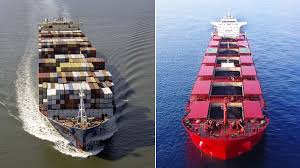When importing maize, choosing between containerized and bulk vessel shipping significantly impacts costs, logistics, and efficiency. This guide compares both methods to help you determine the best option for your business.
Key Factors to Consider:
✔ Cost per Metric Ton
✔ Shipping Speed & Flexibility
✔ Cargo Safety & Quality Control
✔ Customs & Port Handling
1. Containerized Maize Shipping
A. How It Works
Maize is packed in 20’ or 40’ containers (standard or high-cube).
Loaded as:
Loose bulk (directly poured into containers)
Bagged (50kg polypropylene sacks)
B. Advantages
✅ Lower Minimum Order Quantity (MOQ)
1 container (24–28 MT) vs. bulk (5,000+ MT).
✅ Faster TransitLess port congestion vs. bulk vessels.
✅ Better Quality ControlReduced moisture exposure; easier fumigation.
✅ Flexible DestinationsIdeal for smaller ports without bulk infrastructure.
C. Disadvantages
❌ Higher Cost per Ton
~15–30/MTmorethanbulk(2024avg:∗∗15–30/MTmorethanbulk(2024avg:∗∗240–260/MT CIF**).
❌ Labor-Intensive LoadingRequires bagging/palletizing (extra cost).
D. Best For:
Importers needing 10–500 MT.
Buyers in countries with no bulk port facilities (e.g., some African nations).
2. Bulk Vessel Maize Shipping
A. How It Works
Maize is loaded directly into ship holds (10,000–50,000 MT capacity).
Transported to bulk terminals with grain silos/unloaders.
B. Advantages
✅ Lower Cost per Ton
Economies of scale (~$210–230/MT CIF for 10,000+ MT).
✅ Faster Loading/UnloadingAutomated systems move 1,000–2,000 MT/hour.
✅ No Packaging CostsEliminates bagging expenses.
C. Disadvantages
❌ High MOQ
Requires 5,000+ MT to be viable.
❌ Port LimitationsOnly feasible for ports with grain terminals (e.g., Rotterdam, Ho Chi Minh).
❌ Quality RisksMoisture damage if vessel ventilation fails.
D. Best For:
Large feed mills processing 10,000+ MT/year.
Countries with bulk port infrastructure (Vietnam, China, EU).
3. Cost Comparison (2024 Estimates)
| Factor | Container | Bulk Vessel |
|---|---|---|
| Cost/MT (CIF) | $240–260 | $210–230 |
| MOQ | 24–28 MT | 5,000+ MT |
| Transit Time | 12–18 days | 18–25 days |
| Port Fees | Lower | Higher (demurrage risk) |
| Insurance | 1.2% cargo value | 0.8% cargo value |
Note: Bulk saves $20–50/MT but requires huge volume commitments.
4. How to Choose?
Pick Containers If:
You need <1,000 MT.
Your port lacks bulk facilities.
You prioritize quality control (e.g., food-grade maize).
Pick Bulk If:
You import 10,000+ MT annually.
Your port has grain terminals.
Your priority is lowest cost/ton.
5. Hybrid Solution: “Mini-Bulk”
For mid-sized buyers (500–5,000 MT):
Flexitanks in containers (holds ~24 MT liquid bulk).
Big Bags (1–2 MT) loaded onto flats.
Cost: ~$230–250/MT (between standard container and bulk).
6. Real-World Case Study
Vietnamese Feed Mill Scenario:
Option 1: 10 containers (260 MT) @ 250/MT=∗∗250/MT=∗∗65,000**
Option 2: Bulk vessel (10,000 MT) @ 220/MT=∗∗220/MT=∗∗2.2M**
Savings: Bulk saves $300,000 but requires storage for 10K MT.
Decision: Mills with silos choose bulk; smaller buyers use containers.
7. Pro Tips to Reduce Costs
Negotiate freight rates during maize off-season (Feb–Apr).
Combine shipments with other grains for bulk discounts.
Use ASEAN-Pakistan FTA to cut 5–10% on duties.
Conclusion
Containers offer flexibility for smaller orders, while bulk shipping maximizes savings for high-volume buyers. Assess your:
Annual volume
Port capabilities
Budget
Need Help Deciding? Contact Our Logistics Team for a Free Cost Analysis.

